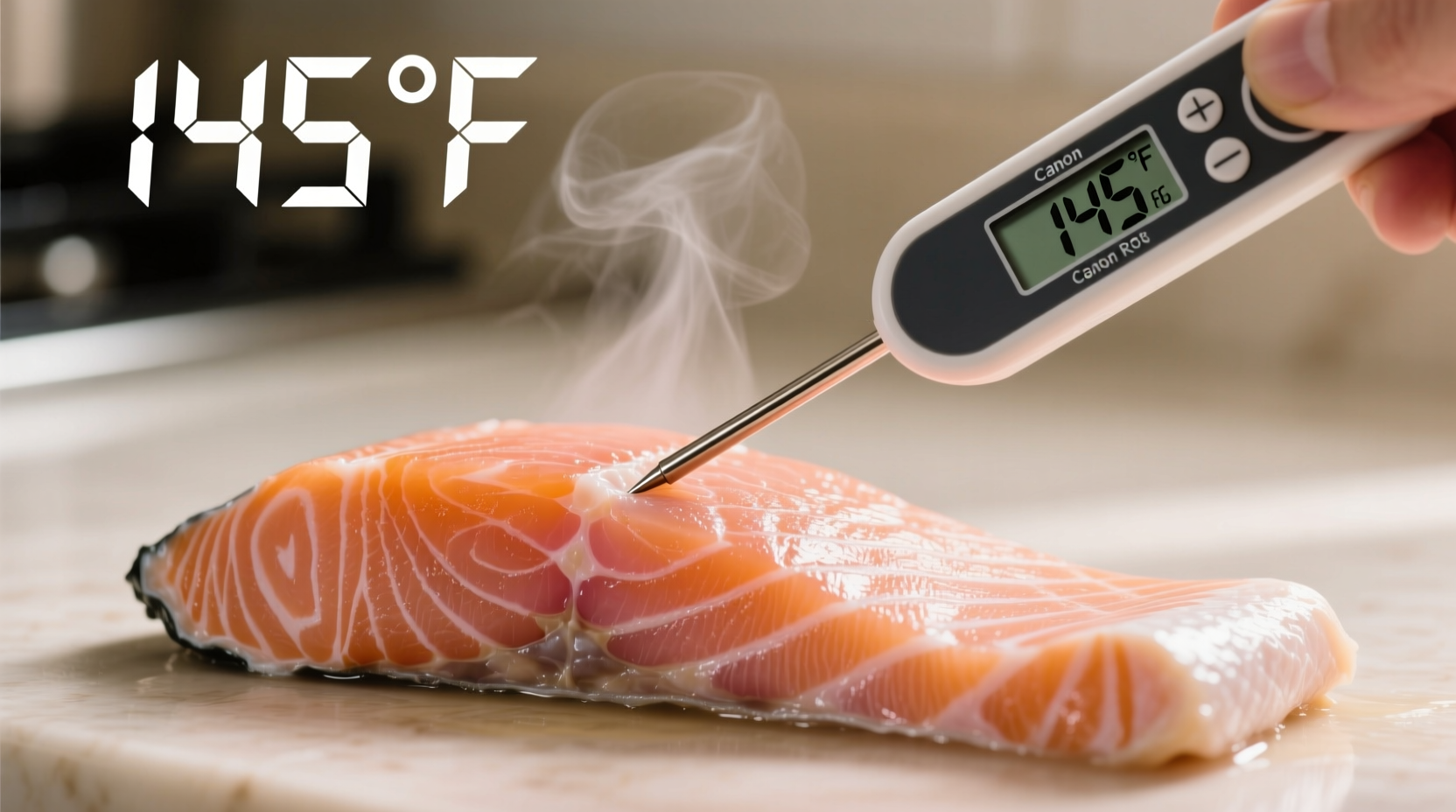Getting the perfect salmon texture requires precise temperature control. Whether you're pan-searing, baking, or grilling, hitting the right internal temperature ensures your salmon stays moist, flavorful, and safe to eat. This guide reveals exactly what temperature to cook salmon to, backed by food safety guidelines and professional chef recommendations—plus practical tips for measuring and achieving perfect results every time.
Why Temperature Matters for Perfect Salmon
Unlike chicken or pork, salmon cooks quickly and continues to cook after removal from heat due to carryover cooking. The precise temperature you target directly impacts:
- Food safety—killing harmful bacteria while avoiding overcooking
- Texture—preventing dry, chalky results from exceeding 140°F
- Flavor development—allowing natural oils to enhance taste
- Nutrient retention—preserving omega-3 fatty acids sensitive to high heat
Salmon enters the food safety "danger zone" below 140°F, but unlike other proteins, it reaches safe consumption levels at lower temperatures due to its low risk of pathogens when properly handled. The FDA confirms that salmon cooked to 125°F and held for 30 seconds is safe, as the heat destroys parasites common in raw fish.
| Doneness Level | Internal Temperature | Visual & Texture Characteristics |
|---|---|---|
| Medium-Rare | 120-125°F (49-52°C) | Translucent center, soft flake, rich oil release |
| Medium | 125-130°F (52-54°C) | Slightly translucent center, firm but moist flake |
| Medium-Well | 130-135°F (54-57°C) | Opaque throughout, firm flake, minimal moisture loss |
| Well-Done | 135-140°F (57-60°C) | Completely opaque, dry texture, significant moisture loss |
Official Guidelines vs. Chef Recommendations
The USDA's Food Safety and Inspection Service recommends cooking all fish to 145°F (63°C), measured with a food thermometer. However, this temperature often results in overcooked, dry salmon. Professional chefs and culinary institutions like the Culinary Institute of America have refined this guidance specifically for salmon:
"Salmon's high fat content allows for lower cooking temperatures while maintaining safety," explains Chef Thomas Keller in The French Laundry Cookbook. "For optimal texture, remove salmon from heat at 125°F—it will continue to cook to 130°F during resting."
This evolution in recommendations reflects better understanding of fish biology. According to the FDA Food Code 2022, fish cooked for immediate consumption can be served at 125°F if held for 30 seconds, acknowledging modern food safety science.
How to Measure Salmon Temperature Accurately
Proper temperature measurement makes or breaks your salmon cooking results. Follow these steps:
- Use an instant-read thermometer—Thermapen or similar high-accuracy digital thermometer
- Insert at the thickest part—away from bones and the pan surface
- Check multiple spots—especially with uneven fillets
- Remove early—take salmon off heat 5°F below target temperature
- Rest properly—let salmon rest 5 minutes before serving
Avoid common mistakes like checking temperature too early (causing heat loss) or inserting the thermometer near the skin (which reads higher than the center).

Temperature Adjustments by Cooking Method
Different cooking techniques require temperature adjustments due to heat distribution and carryover cooking:
- Pan-searing: Remove at 120°F (50°F)—high surface heat causes significant carryover
- Oven baking: Remove at 125°F (52°C)—more even heating means less carryover
- Grilling: Remove at 122°F (50°C)—direct flame creates hot spots requiring careful monitoring
- Poaching: Maintain water at 160-180°F (71-82°C)—salmon cooks to 125°F internally
The American Heart Association notes that lower-temperature cooking methods like poaching preserve more omega-3 fatty acids compared to high-heat techniques, making temperature control crucial for nutritional benefits.
Troubleshooting Temperature Issues
Even with careful monitoring, salmon can go wrong. Here's how to handle common issues:
If your salmon is under 120°F: Return to gentle heat for 30-60 seconds, then recheck. Never microwave salmon to finish cooking—it creates uneven texture.
If you've overshot 140°F: Immediately transfer to a cold plate to stop cooking. Serve with extra sauce or lemon-dill aioli to compensate for dryness. For future attempts, reduce cooking time by 25%.
When visual cues contradict thermometer readings: Trust the thermometer. Salmon cooked to 125°F should still appear slightly translucent in the center but flake easily when tested with a fork.
Remember that frozen salmon requires an additional 5°F in target temperature to account for ice crystal formation affecting heat transfer. Always thaw salmon properly in the refrigerator before cooking for most accurate temperature readings.
Perfect Salmon Temperature: Key Takeaways
Mastering salmon temperature transforms this delicate fish from potentially dry and disappointing to restaurant-quality at home. The sweet spot sits between 125°F for medium-rare and 135°F for medium doneness—well below the generic USDA recommendation but perfectly safe when handled properly.
Invest in a quality instant-read thermometer, remove salmon from heat 5°F below your target temperature, and allow proper resting time. These simple steps guarantee moist, flavorful salmon with the perfect flake every time you cook this nutritious fish.











 浙公网安备
33010002000092号
浙公网安备
33010002000092号 浙B2-20120091-4
浙B2-20120091-4